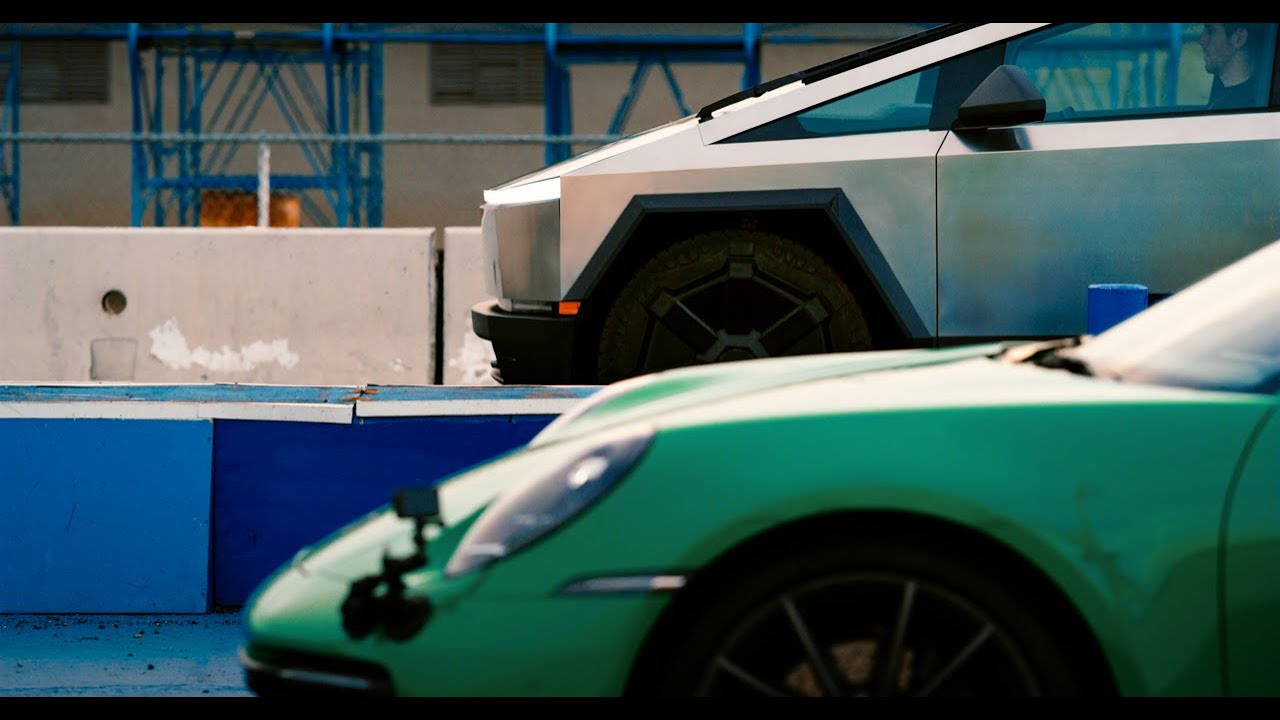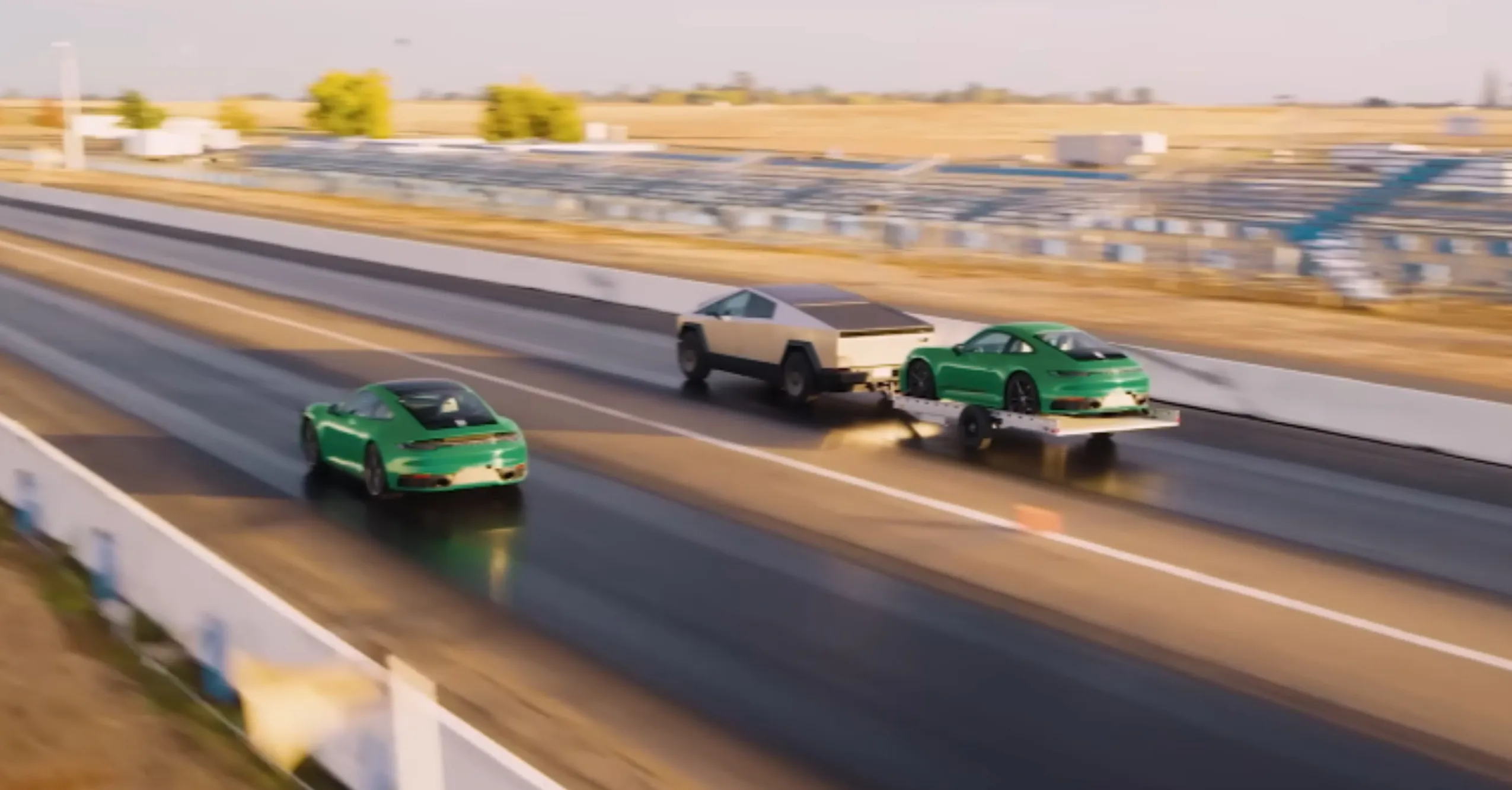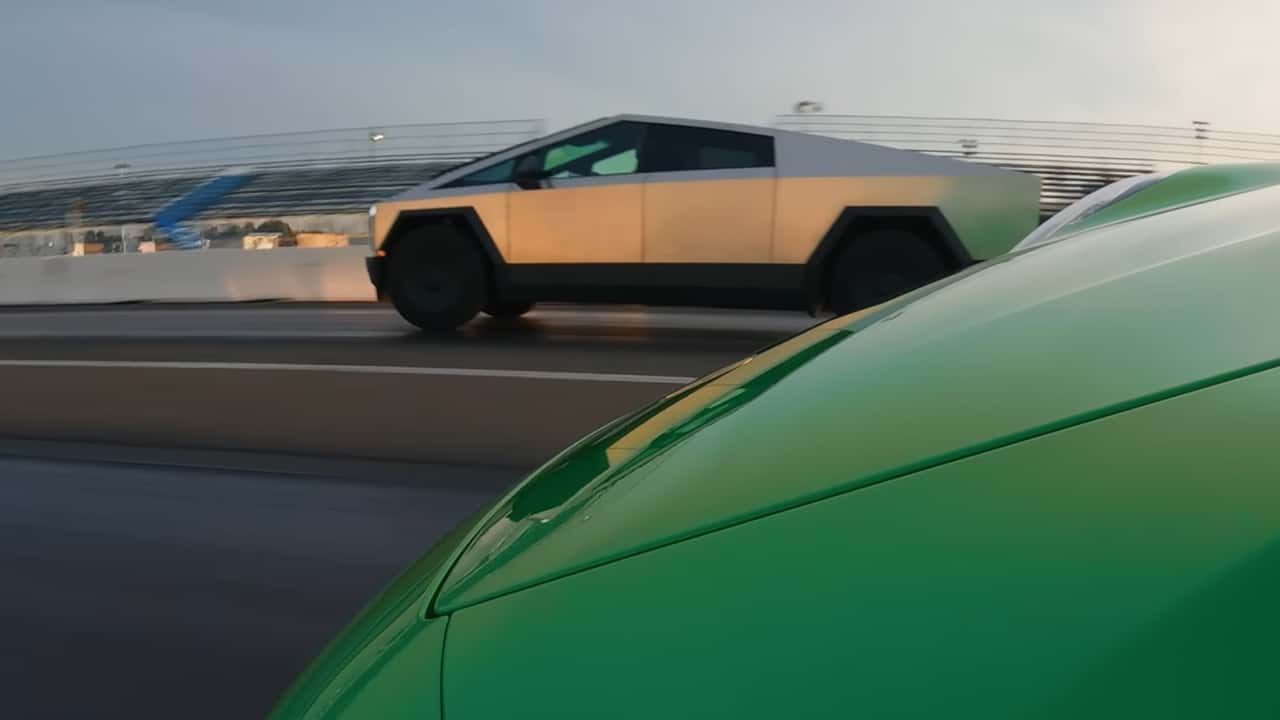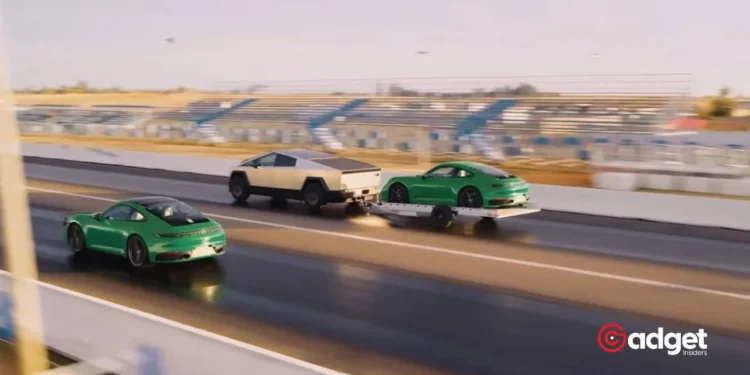When Tesla released footage of their Cybertruck effortlessly defeating a Porsche 911 in a drag race, while simultaneously towing another 911, it captured the attention of automotive enthusiasts and skeptics alike. The dramatic visual promised unprecedented performance, setting forums and social media abuzz with debates and analyses.
However, as details emerged, the scenario Tesla presented began to unravel. Skepticism grew as experts and car aficionados questioned the plausibility of the race. Now, thanks to thorough testing by MotorTrend, we have clearer insights that suggest the initial spectacle was more of a marketing stunt than a display of actual performance capabilities.

MotorTrend Puts Tesla’s Claims to the Test
In an ambitious attempt to replicate Tesla’s claim, MotorTrend gathered the necessary components: two Porsche 911 Carrera Ts, a Cybertruck dubbed the “Cyberbeast” with a staggering 845 horsepower, and the same aluminum trailer featured in Tesla’s original race.
Their objective was clear: to determine whether the Cybertruck could indeed outpace a Porsche while burdened with another.
The outcome was telling. Over six quarter-mile races, the Porsche consistently outperformed the Cybertruck, even improving its time as the driver refined his technique. The Cybertruck, on the other hand, saw minimal improvement, lagging even in the best-case scenario Tesla could have hoped for.
Tesla Cybertruck vs Porsche 911pic.twitter.com/Xu83nKc6ut
— Özer Dölekoğlu (@wrzl) December 1, 2023
Behind the Scenes of the Testing
MotorTrend’s meticulous approach extended beyond simple racing. They weighed each driver, the cars, and even the trailer to ensure fairness. Advanced technology like VBox data loggers provided objective data, affirming Porsche’s superior speed.
Despite the Cybertruck’s impressive start—likely due to the instant torque characteristic of electric vehicles—it quickly lost its lead to the manually-transmitted Porsche.

Revelations and Reactions
Further complicating Tesla’s narrative, Wes Morrill, Cybertruck’s lead engineer, admitted on X (formerly Twitter) that the company had only conducted an eighth-mile race, not the quarter-mile as originally implied.
He justified the decision by highlighting safety concerns due to the trailer’s tire ratings and suggested that extending the race could have resulted in similar outcomes without worth the risk.
Jason Fenske from the Engineering Explained YouTube channel also weighed in, revealing discrepancies in Tesla’s presentation of the race. It turns out, that the Cybertruck’s performance was not as flawless as initially portrayed, with the Porsche showing superior speed in the majority of the MotorTrend tests.

What This Means for Tesla and the Auto Industry
This revelation may not significantly dent the Cybertruck’s allure among Tesla enthusiasts, but it serves as a critical reminder of the importance of transparency in marketing. While the Cybertruck remains a formidable vehicle in its own right, its touted dominance over conventional sports cars like the Porsche 911 under such unique conditions appears overstated.
As we continue to navigate the exciting landscape of automotive innovation, particularly with electric vehicles, it’s essential to keep marketing claims in check with reality. This ensures that consumers make informed decisions based on genuine capabilities rather than theatrical presentations.
For those intrigued by the specifics of MotorTrend’s tests and the detailed data, a visit to their site will provide a comprehensive breakdown, allowing the facts to speak for themselves. As for the auto world, this episode is another fascinating chapter in the ongoing evolution of car performance metrics and what they signify in real-world conditions.










